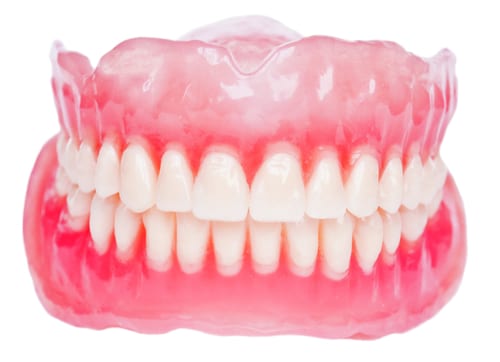
An Affordable Solution For Missing Teeth
Dentures are one of the oldest dental appliances and, accordingly, have experienced significant evolution over the course of their existence. Although there are varying types, they are generally defined as devices designed to replace missing teeth. Technically speaking, synthetic teeth are prosthetic devices and are commonly constructed and placed by dental specialists known as Prosthodontists. However, most general dentistry practitioners are fully capable of fitting replacement teeth, and do so on a regular basis. If you have missing teeth, there are varied options in terms of replacing them with lifelike and functional prostheses.
The first important thing to know about prosthetic teeth is that there are several distinct types. First, they can be either removable or fixed. Obviously, the removable type can be taken out easily and are designed to be removed daily for cleaning. Fixed versions, on the other hand, are designed to remain in the mouth permanently. Furthermore, prosthetic teeth may be partial or complete. Complete devices consist of an entire arch of teeth, whereas partials replace only a few teeth.
Complete dentures are almost always removable. The fabricating procedure begins with a dentist taking an impression of the upper or lower arch. With an impression in hand, a technician at a dental laboratory will fabricate each of the teeth and insert them into a soft rim designed to mimic the color of natural gums. Complete, removable versions are secured to the arch via over-the-counter dental adhesives.
Partials can either be fixed or removable. Like complete dentures, fixed, removable devices are fabricated in a laboratory, complete with prosthetic teeth and a gum-like support. In addition, the device is equipped with metal brackets which attach to neighboring teeth in order to hold it in place. Fixed partials are commonly referred to as a “crown and bridge.” These are held in place via an attachment to a crown seated on a neighboring tooth. The prosthetic teeth span the toothless space, hence the term “bridge.”
The general advantage of dentures is that they facilitate easier chewing and eating, not to mention the aesthetic value they offer. However, each variation has its own unique pros and cons. Removables are somewhat easier to keep clean since they can be taken from the mouth and placed in a cleaning solution. The drawback, however, is that they may not be as firm or snug as the fixed option. Complete removables are generally the least secure, as they have no natural anchoring device aside from the gums themselves. Fixed types are tighter and more secure, but are slightly more difficult to keep clean. Because the bridge portion of a fixed appliance does not make complete contact with the gum line, food particles and bacteria can easily become trapped under the prosthetic teeth, making it difficult to keep the area sterile.
Consulting your dentist is the best course of action for determining which type of denture is best for you. Costs vary according to whether they are fixed or removable and how many replacement teeth must be fabricated. In addition, removable teeth will inevitably require adjusting, adding to their long-term cost. Fortunately, most major insurance companies offer coverage for all types of replacement teeth, since they are essential for proper chewing function and good oral health.

